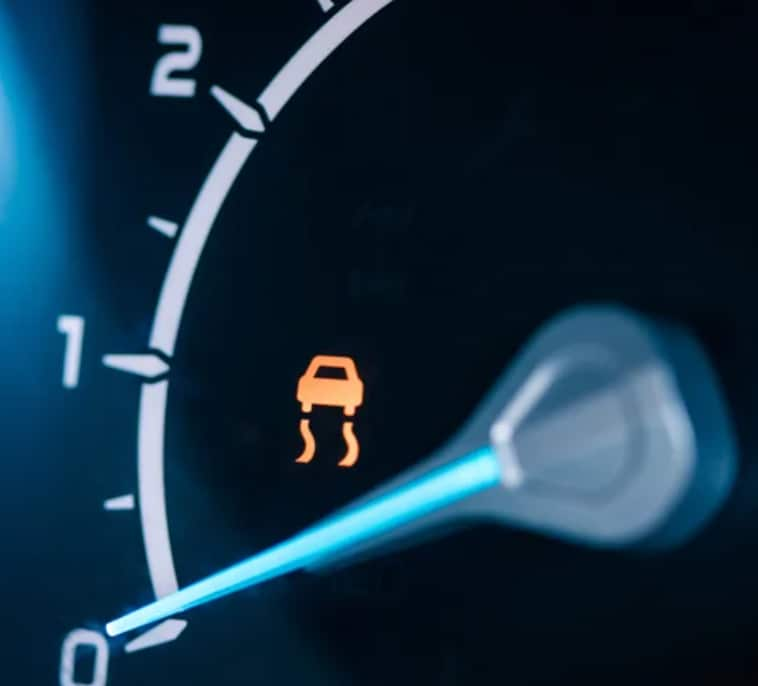
As technology continues to evolve, so does our capacity to drive safer, faster, and more efficiently. One such technological marvel that has silently revolutionized both everyday driving and high-performance racing is the Electronic Stability Control (ESC) system.

Often overlooked by many drivers until a warning light catches their eye, ESC plays a crucial role in maintaining vehicle stability and safety. Whether you're navigating through city streets or pushing your car to its limits on a racetrack, ESC is there to ensure you stay on course. This blog explores how ESC works, its impact on driving performance, the meaning of those dashboard lights, and why understanding this system can be lifesaving.
In essence, Electronic Stability Control is an advanced active safety feature designed to help drivers maintain control of their vehicles under adverse conditions. The magic of ESC lies in its ability to detect skidding or slipping before it becomes unmanageable. By applying selective braking to individual wheels and adjusting steering and throttle inputs almost instantaneously, it mitigates understeer or oversteer conditions that often lead to loss of vehicle control. Imagine taking a sharp corner at speed; without ESC, excessive understeer might cause your car to drift wide off the intended path, while oversteer could spin you out entirely. With ESC engaged, these scenarios are much less likely as the system subtly corrects your trajectory.
The inner workings of an ESC system are quite sophisticated yet elegantly simple in function. It constantly monitors several parameters like wheel speed, steering angle, yaw rate (the rate at which the car rotates around its vertical axis), lateral acceleration, and throttle position. When these sensors detect any deviation from the desired path or input from the driver, such as when the wheels begin to slip during acceleration, the ESC intervenes by modulating engine power or applying brake pressure where needed most. Some advanced systems can even downshift gears automatically if necessary to regain control.

For those who love motorsports or spirited driving on twisty roads, understanding how ESC influences lap times can be enlightening. Professional racers often speak about achieving perfect balance through corners; this is where ESC shines by fine-tuning vehicle dynamics instantaneously for optimal grip and performance. In racing terms, it allows drivers to push harder while being confident that the car will react predictably if things start going awry mid-corner—a critical factor not just for winning races but also for ensuring safety at high speeds.
A common point of confusion among drivers is interpreting the ESC warning light on their dashboard, typically depicted as a car with squiggly lines behind it. This light illuminates when the system is actively working its magic; however, it's important not to panic when you see this flashing icon because it usually means everything's working correctly! If anything should concern you about this indicator staying lit persistently without any apparent cause, like slippery roads or aggressive maneuvers, it might suggest there's an issue with your vehicle’s stability control system requiring attention from a professional mechanic.
Source: SlashGear

Often overlooked by many drivers until a warning light catches their eye, ESC plays a crucial role in maintaining vehicle stability and safety. Whether you're navigating through city streets or pushing your car to its limits on a racetrack, ESC is there to ensure you stay on course. This blog explores how ESC works, its impact on driving performance, the meaning of those dashboard lights, and why understanding this system can be lifesaving.
In essence, Electronic Stability Control is an advanced active safety feature designed to help drivers maintain control of their vehicles under adverse conditions. The magic of ESC lies in its ability to detect skidding or slipping before it becomes unmanageable. By applying selective braking to individual wheels and adjusting steering and throttle inputs almost instantaneously, it mitigates understeer or oversteer conditions that often lead to loss of vehicle control. Imagine taking a sharp corner at speed; without ESC, excessive understeer might cause your car to drift wide off the intended path, while oversteer could spin you out entirely. With ESC engaged, these scenarios are much less likely as the system subtly corrects your trajectory.
The inner workings of an ESC system are quite sophisticated yet elegantly simple in function. It constantly monitors several parameters like wheel speed, steering angle, yaw rate (the rate at which the car rotates around its vertical axis), lateral acceleration, and throttle position. When these sensors detect any deviation from the desired path or input from the driver, such as when the wheels begin to slip during acceleration, the ESC intervenes by modulating engine power or applying brake pressure where needed most. Some advanced systems can even downshift gears automatically if necessary to regain control.

For those who love motorsports or spirited driving on twisty roads, understanding how ESC influences lap times can be enlightening. Professional racers often speak about achieving perfect balance through corners; this is where ESC shines by fine-tuning vehicle dynamics instantaneously for optimal grip and performance. In racing terms, it allows drivers to push harder while being confident that the car will react predictably if things start going awry mid-corner—a critical factor not just for winning races but also for ensuring safety at high speeds.
A common point of confusion among drivers is interpreting the ESC warning light on their dashboard, typically depicted as a car with squiggly lines behind it. This light illuminates when the system is actively working its magic; however, it's important not to panic when you see this flashing icon because it usually means everything's working correctly! If anything should concern you about this indicator staying lit persistently without any apparent cause, like slippery roads or aggressive maneuvers, it might suggest there's an issue with your vehicle’s stability control system requiring attention from a professional mechanic.
Source: SlashGear
Categories:
Pre-Owned Inventory, News, Community Events, People, Service, Social, Body Shop, Rental, Finance, Parts